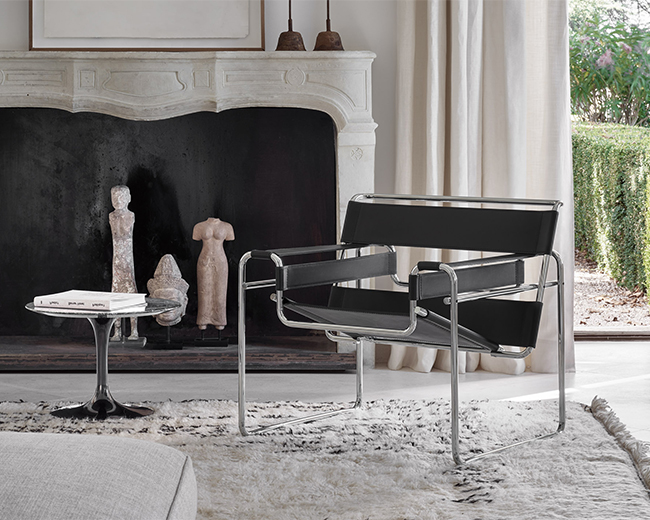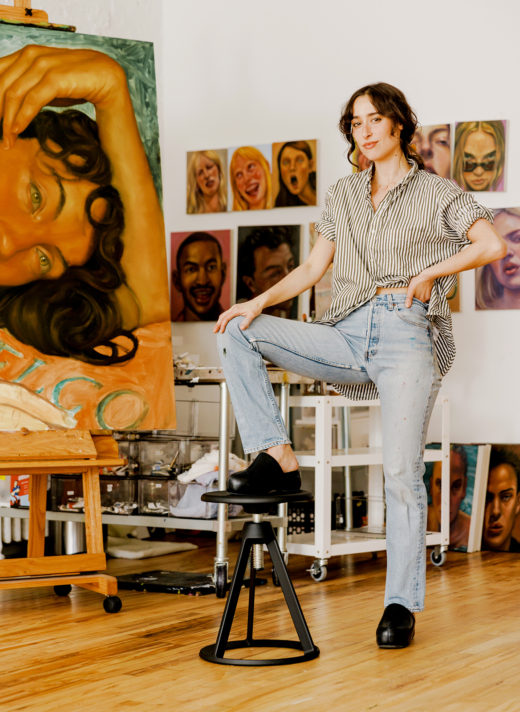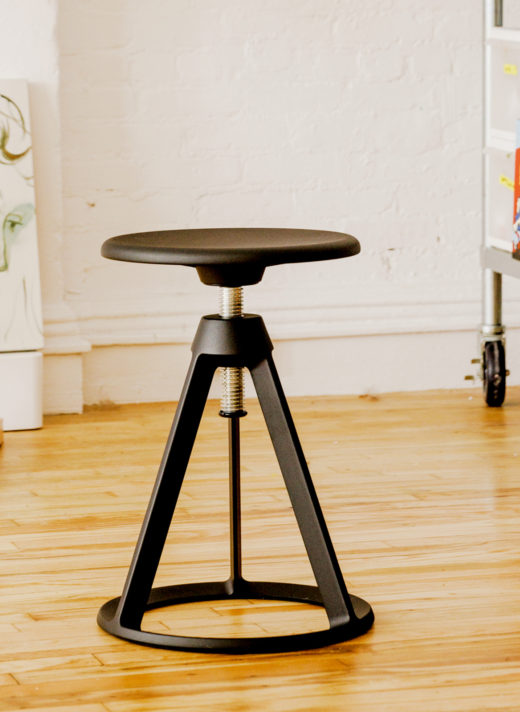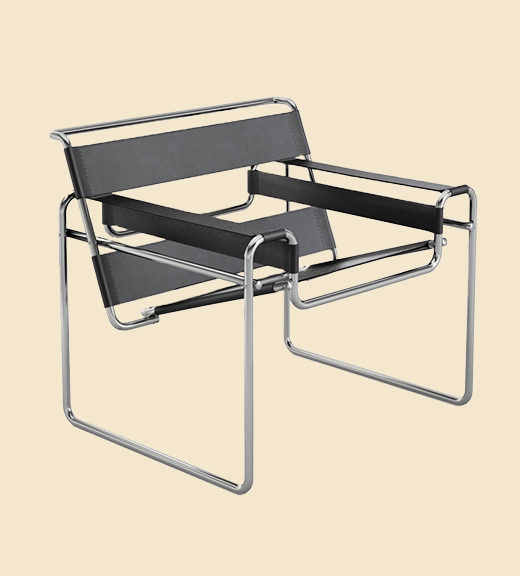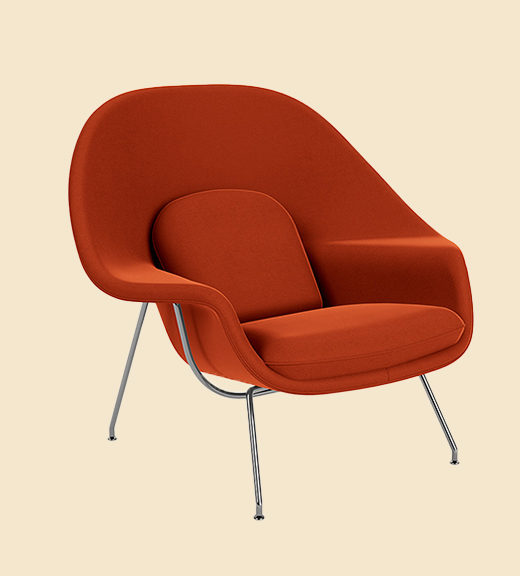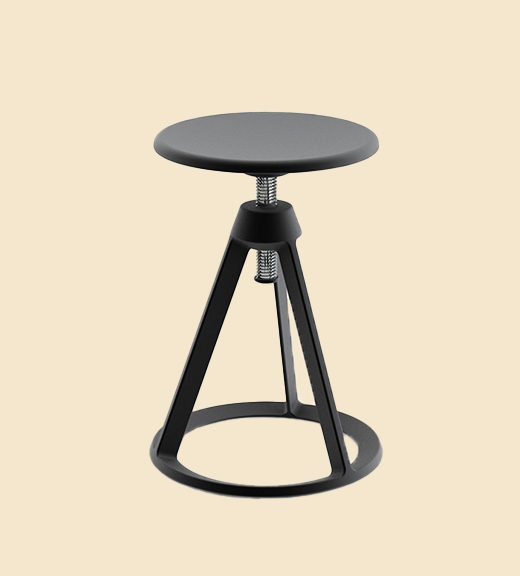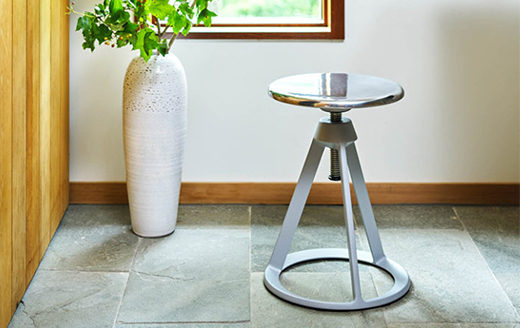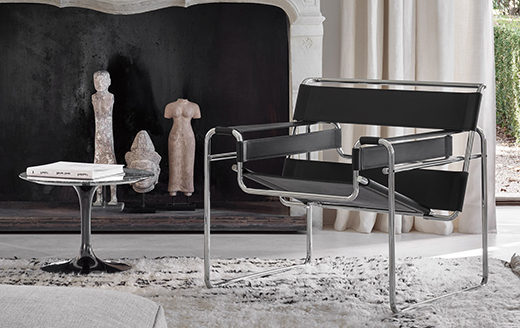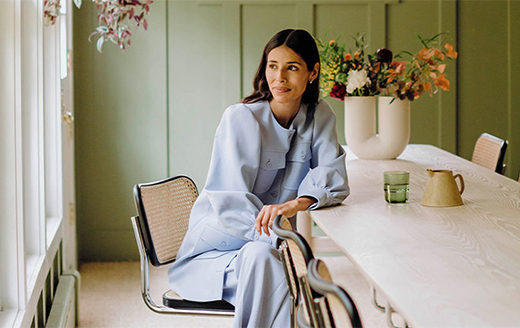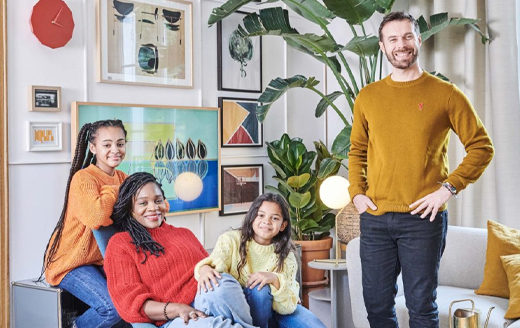LIVING WITH
Chloe Wise Created a Fluid Live-Work Space in Manhattan
Chloe Wise designed her midtown-Manhattan apartment with a natural, humanistic approach. A multidisciplinary artist with a functional need for fluidity and flexibility—she variedly pivots between painting, socializing, cooking and playing with her cats—and an acquired taste for Modernism from the Montreal home she grew up in, her space effortlessly sheds a light on different corners of her life.
We visited Wise and her cats, Hans and Pluto, ahead of her first Montreal-based exhibition, In Loveliness of Perfect Deeds, to distill an artist’s approach to living and working at home.
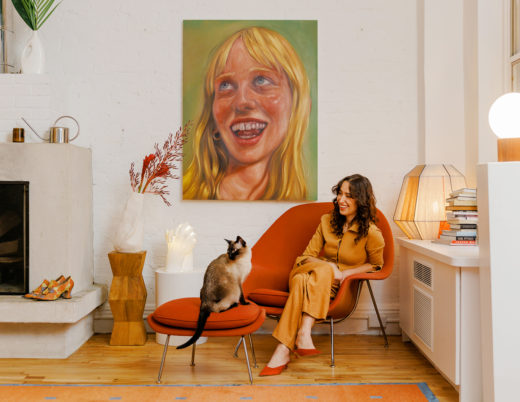
Tell us about your background.
I’m from Montreal, but I’m half American—my mom is from Michigan. I moved to New York in 2013 and have been here for nine years. I’m a multimedia artist and a proud cat mother. And now, here we are in my Midtown chateau. I moved in a few months ago, so it's still relatively new to me. I’ve been on a miraculous high the last few months after moving in here.
Give us a background of your space. How does it reflect your lifestyle?
I’m very much committed to this, like, live-slash-work way of living. It enables me to paint at all hours of the day or night and to have very little separation between the life or work component of my existence, so I can flow easily between baking and cooking and hanging out with friends and working and having an idea in the middle of the night and painting in my pajamas.
It was hard to find a space in the city that was ideal for this. The space [I had in mind] was an 80s New York idealized dream that was hard to discover. I searched for a long time. When I saw this one, it was obvious that it was the one. Not only was the vibe excellent, but the certain furniture that was left here by the previous owners was of the era and the overall aesthetic of the house I grew up in. It was the kind I am drawn to, which was black and white and beige with wood, furniture with unique curves…. It was unlike anything I’d ever seen. Every single thing felt perfect. Every little detail.
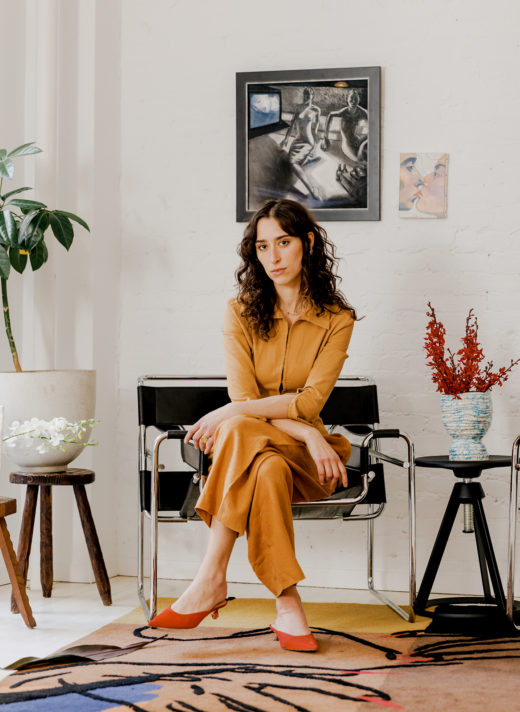
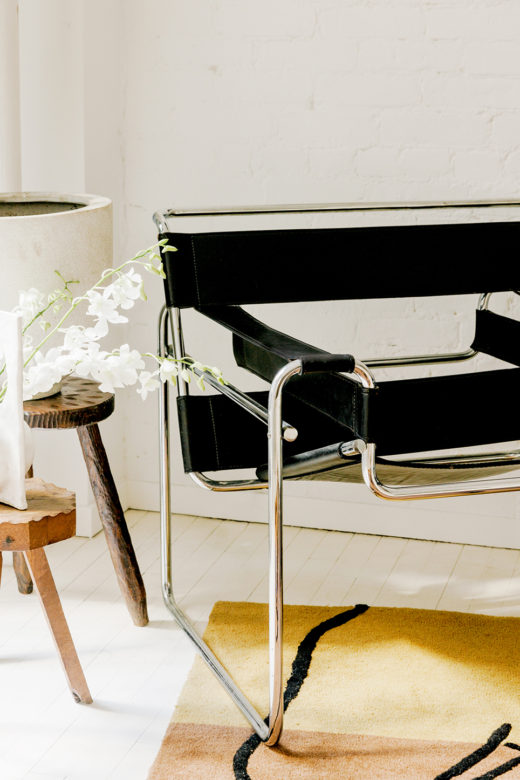
How do themes in your art, like friends and food, show up in your apartment?
It’s inescapable that I’m going to live alongside my paintings because of the nature of my live-work setup. And I have no problem with that. I love to be surrounded by the faces of the people that I love. But that really takes up a lot of the aesthetic decision making right there.
There’s so many colors [in my art] that I don’t really have the opportunity to go wild with my furniture choices, which I also wouldn’t want to necessarily do despite the fact that colors are my absolute everything and I’m a very maximalist painter in terms of color decisions. I’m more into muted, neutral and natural materials for designing a space.
My design decisions have mostly been around neutrals that can support the colorful variety of the work that they interact with, which is also in a very transient way because the paintings come and go.
What are your central functional design priorities?
The most important thing to me is that a space is flexible and movable and changeable, so it can—in a malleable way—bend to my needs both artistically if I have a lot of paintings to work through, and socially if I’m going to have friends over.
My design decisions have mostly been around neutrals that can support the colorful variety of the work that they interact with, which is also in a very transient way because the paintings come and go. Modularity helps create different types of spaces depending on the needs.
What are your views on the relationship between furniture and art?
For me, it’s not really about anything being set in its spot. Nothing is going to stay where it is now—it’s moveable. I think a lot of people make interior design decisions based on permanence. My approach is inherently impermanent, where everything must be able to move and maybe get covered in a little paint and look really cute with my gorgeous cats.
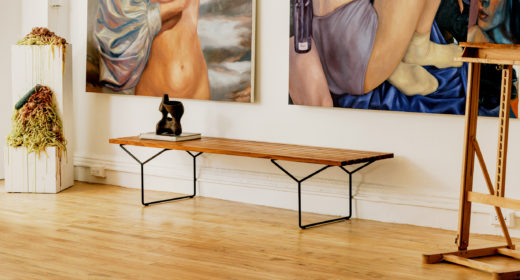
What is Hans and Pluto’s favorite piece of furniture?
When I first moved in, they were really freaked out the first couple of weeks because they were in a new, unusual space and they had to deal with that. The place they went to for comfort was the red Saarinen Womb chair. I would look up and they’d always be cuddling together.
What’s your favorite lounge chair?
The Saarinen Womb Chair is my favorite because it’s shockingly cozy and comfy—and it gets used the most. My cats love it. I’ve never had a reading chair where I can sit and read comfortably. I also love the Breuer Wassily chairs because those are my parents’ and I grew up with them. It’s nice to make them my own.
My approach is inherently impermanent, where everything must be able to move and maybe get covered in a little paint and look really cute with my gorgeous cats.
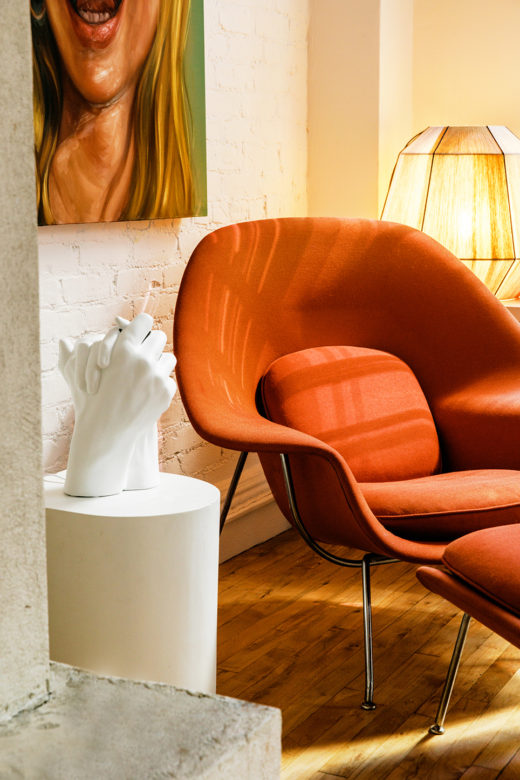
What about your parents’ influence on your design decisions?
Growing up, I always thought my parents had weird furniture. In actuality, they had very beautiful tastes with a lot of glass block and mirrored walls—very 80s. It wasn’t particularly fancy. It was just very specific. The specificity of my mom’s decision-making was something that, when I was a kid, I didn’t get. Now, almost everything I buy or love or find myself collecting or wanting to be around matches their color palette and taste.
My parents’ house has a similar aesthetic magnetism, where I keep finding myself making decisions for my own home based on almost exact parallels with the things that they had. They had the exact same Saarinen Womb chair and Hans Hofer modular sofa. I’ve also ended up with many of my mom’s clothes, because I’ve long foraged through her storage units to find vintage pieces. I’ve always respected her style, but I didn’t care about interiors until recently when I started having a place I could furnish.
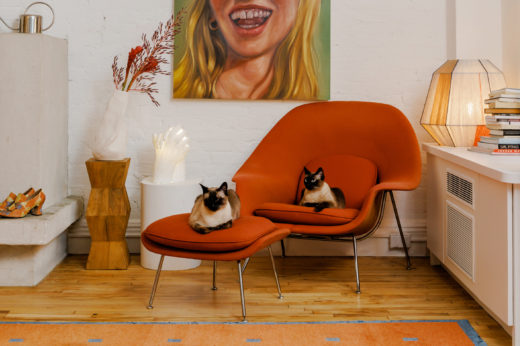
Photography by Max Burkhalter





